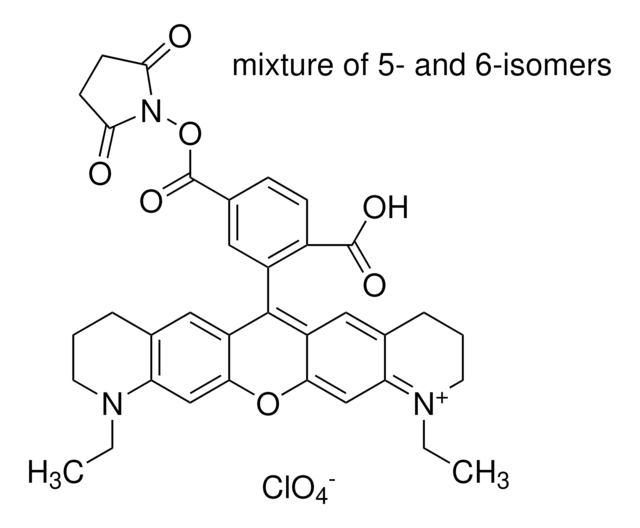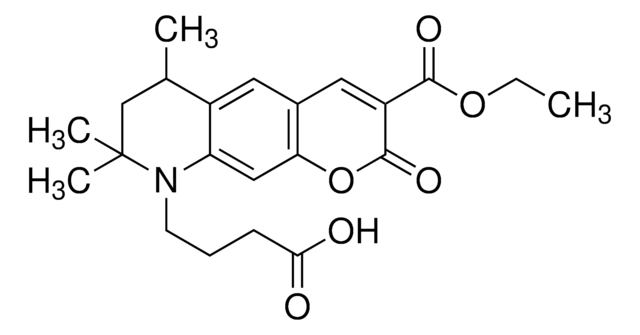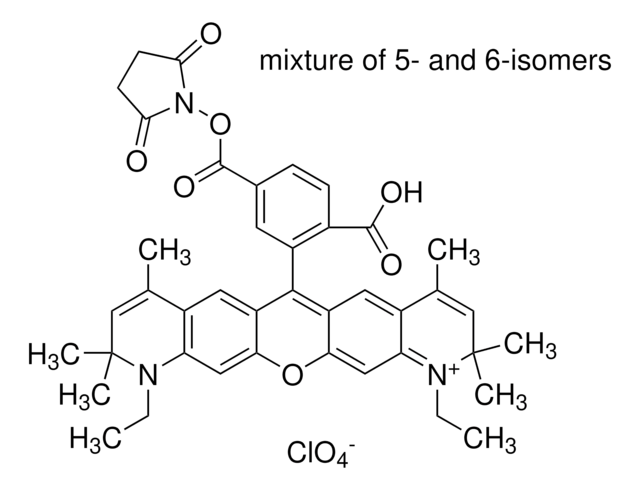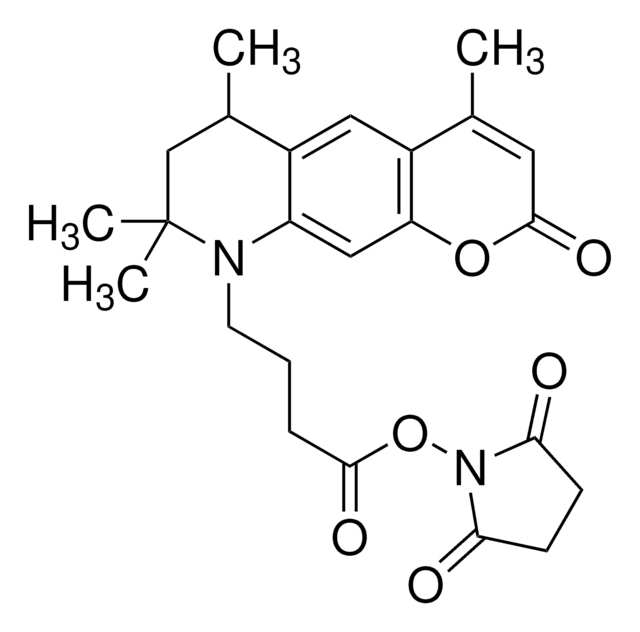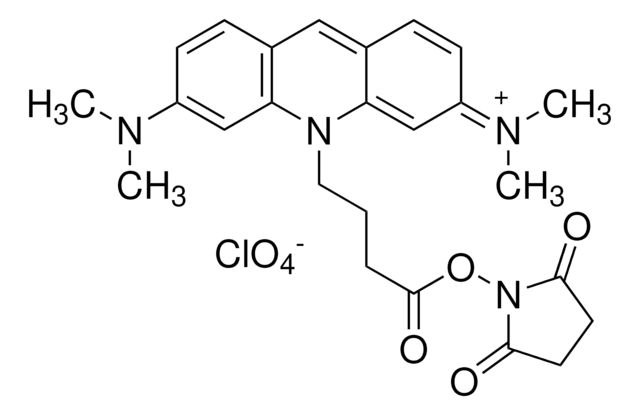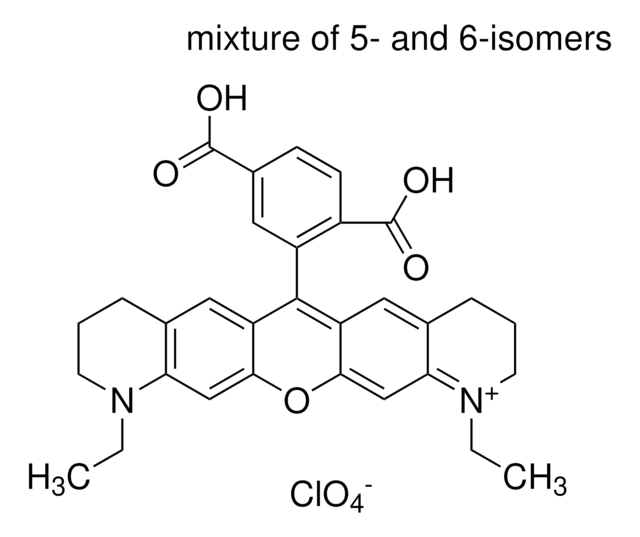16805
Atto 425 NHS ester
BioReagent, suitable for fluorescence, ≥90% (HPLC)
Sinónimos:
Atto 425-N-hydroxysuccinimide ester
About This Item
Productos recomendados
product line
BioReagent
Quality Level
assay
≥90% (HPLC)
≥90% (degree of coupling)
manufacturer/tradename
ATTO-TEC GmbH
solubility
DMF: soluble
DMSO: soluble
H2O: soluble
λ
in ethanol (with 0.1% trifluoroacetic acid)
UV absorption
λ: 422-428 nm Amax
suitability
suitable for fluorescence
storage temp.
−20°C
SMILES string
CCOC(=O)C1=Cc2cc3C(C)CC(C)(C)N(CCCC(=O)ON4C(=O)CCC4=O)c3cc2OC1=O
InChI
1S/C26H30N2O8/c1-5-34-24(32)18-12-16-11-17-15(2)14-26(3,4)27(19(17)13-20(16)35-25(18)33)10-6-7-23(31)36-28-21(29)8-9-22(28)30/h11-13,15H,5-10,14H2,1-4H3
InChI key
PUEQEMDTFPYCDY-UHFFFAOYSA-N
Categorías relacionadas
General description
Application
Other Notes
Legal Information
¿No encuentra el producto adecuado?
Pruebe nuestro Herramienta de selección de productos.
Storage Class
11 - Combustible Solids
wgk_germany
WGK 3
flash_point_f
Not applicable
flash_point_c
Not applicable
ppe
Eyeshields, Gloves, type N95 (US)
Certificados de análisis (COA)
Busque Certificados de análisis (COA) introduciendo el número de lote del producto. Los números de lote se encuentran en la etiqueta del producto después de las palabras «Lot» o «Batch»
¿Ya tiene este producto?
Encuentre la documentación para los productos que ha comprado recientemente en la Biblioteca de documentos.
Los clientes también vieron
Nuestro equipo de científicos tiene experiencia en todas las áreas de investigación: Ciencias de la vida, Ciencia de los materiales, Síntesis química, Cromatografía, Analítica y muchas otras.
Póngase en contacto con el Servicio técnico